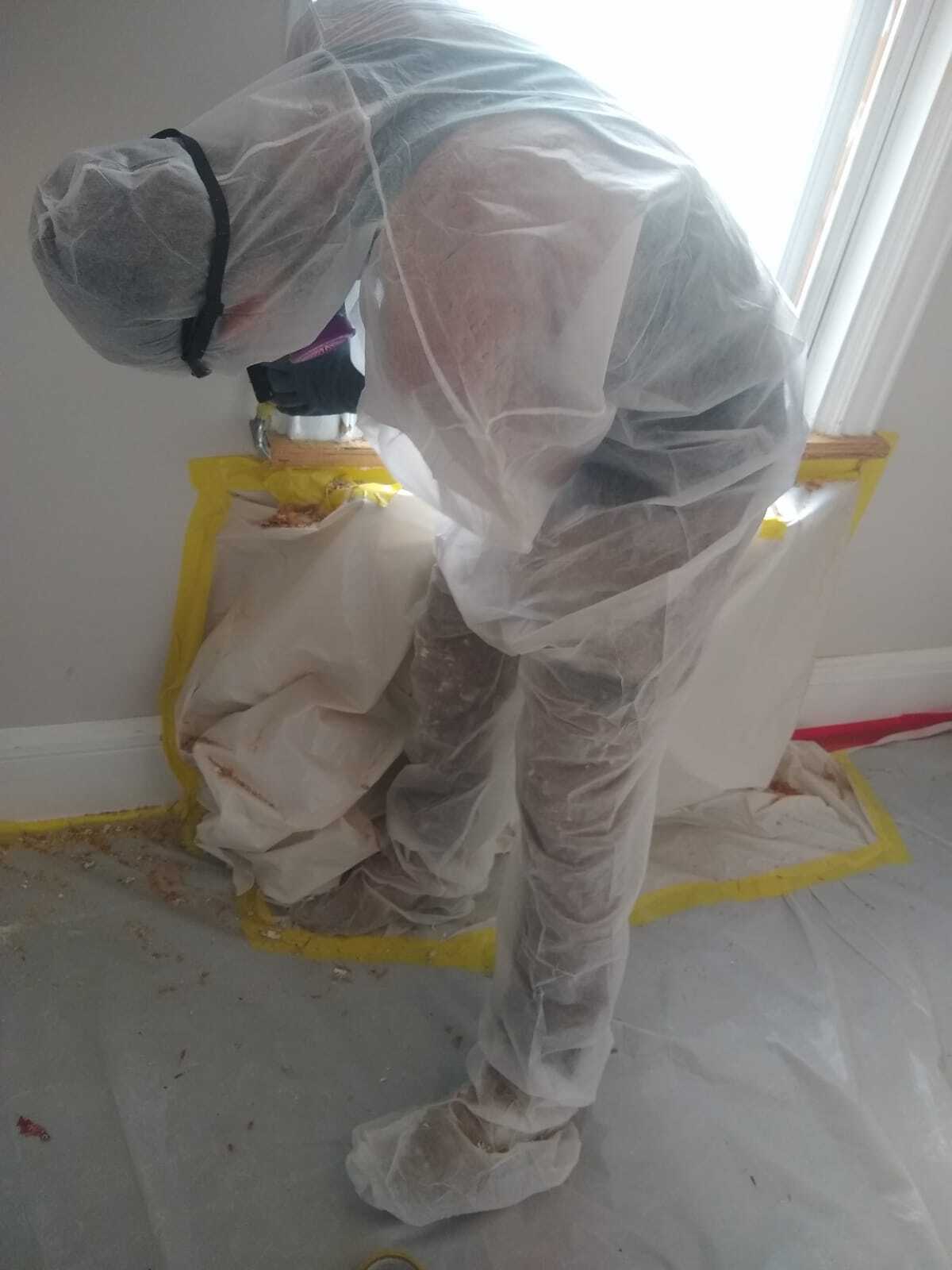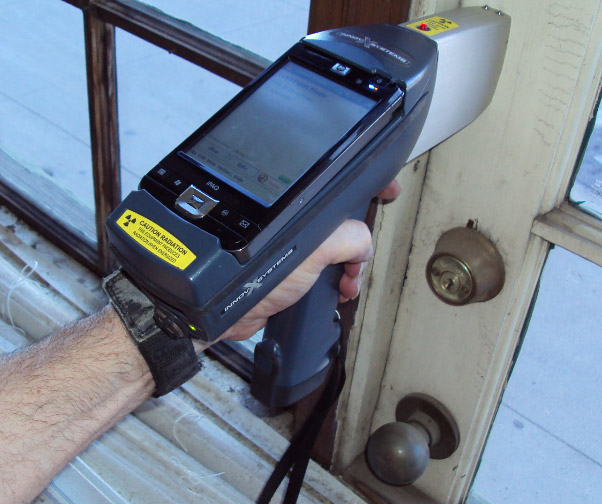Trusted Lead Paint Removal Company-- NYC's Premier Lead Abatement Service
Wiki Article
Crucial Tools and Techniques for Reliable Lead Violation Clean-up
Dealing with lead offenses successfully requires a comprehensive technique that blends the right devices with strategic methods. Concurrently, the use of specialized cleanup tools, such as HEPA vacuums and lead-specific cleaning representatives, is crucial for extensive impurity elimination. Effective containment techniques, consisting of plastic sheeting and adverse air stress systems, are important to stop the spread of hazardous materials.Individual Safety Equipment
Personal safety tools (PPE) is a vital part in the efficient management of lead contamination clean-up. PPE works as an important barrier, protecting workers from the hazardous effects of lead direct exposure, which can lead to severe health and wellness consequences. The important PPE for lead cleanup consists of respirators, protective apparel, handwear covers, and eye protection. Each kind of devices is especially developed to mitigate different dangers connected with lead particles and dirt.Respirators, especially those geared up with HEPA filters, are vital for filtering airborne lead bits, avoiding inhalation. Protective garments, consisting of coveralls and non reusable matches, stops lead dirt from adhering to workers' garments, decreasing the risk of second contamination.
Additionally, rigorous training on the right use and maintenance of PPE is crucial. Workers have to be enlightened on wearing and doffing treatments to prevent contamination. Routine evaluations and substitutes of PPE elements are necessary to maintain their safety capacities, making certain a safe and compliant cleanup operation.
Specialized Cleaning Devices

One more important device is the wet/dry vacuum cleaner, which can properly cleanse up both dirt and fluid contaminants. These vacuum cleaners frequently feature HEPA filters to give an added layer of security. Damp cleans or tack towels are likewise essential for surface cleansing; they are specifically developed to capture and hold lead bits, minimizing the risk of spreading contamination.
For even more persistent down payments, specialized lead-removal cleaner are required. These representatives are formulated to break down lead fragments, making them easier to eliminate. Scrub brushes with durable bristles can aid in this procedure, particularly on harsh surfaces where lead dust often tends to stick more highly.
In addition, encapsulants are used to seal lead-contaminated surface areas, stopping the release of lead dust. These specialized paints and finishes are designed to comply with various substrates, giving a lasting option for lead containment.
Reliable Control Techniques
Reliable containment approaches are critical in alleviating the spread of lead contamination throughout cleanup tasks. Implementing robust control approaches ensures that lead bits do not migrate to unaffected areas, thus protecting both employees and the atmosphere. One main method is using plastic sheeting to secure off infected zones. Heavy-duty polyethylene obstacles can be mounted from floor to ceiling to create a controlled workplace, substantially lowering the threat of air-borne lead dust dispersal.
To improve containment, encapsulants can be applied to surface areas that are not being removed or disturbed. These specialized finishings bind lead dirt, lowering its availability for resuspension. In addition, all employees need to use proper Personal Protective Tools (PPE), including respirators and non reusable fits, to stop contamination spread.
Safe Disposal Practices
Ensuring safe disposal methods is a critical component in the monitoring of lead contamination cleanup. Correct disposal reduces the risk of lead coming back the environment and threatening public health and wellness (DOH & HPD Lead Violation Removal NYC).Delivering lead waste calls for adherence to strict standards. Making use of accredited harmful waste providers makes certain that the products are managed responsibly. Documents, consisting of manifests outlining the kind and amount of waste, ought to come with deliveries to track the waste from the website of origin to its last disposal destination.
Designated hazardous waste disposal facilities are outfitted to handle lead-contaminated materials securely. These centers usually use advanced techniques such as stablizing, solidification, or chemical therapy to reduce the effects of the lead prior to disposal. Landfilling in specialized, lined areas that stop leachate from contaminating groundwater is an usual technique for last disposal.
Regular training for workers associated with lead waste disposal is crucial to preserve security criteria and stop unintentional exposure. By adhering to these methods, companies can dramatically reduce the environmental and wellness effects associated with lead contamination.
Regulatory Compliance Tips

Following governing compliance is critical in the effective implementation of lead contamination cleanup. Recognizing and following federal, state, and local guidelines guarantees not only the safety and health of people but likewise the lawful and financial health of the clean-up organization. The Environmental Security Company (EPA) sets rigid criteria, such as the Lead Renovation, Repair Work, and Painting (RRP) Guideline, which mandates proper qualification and training for service providers handling lead-based tasks.
Conformity begins with a comprehensive evaluation of relevant laws and guidelines. Organizations needs to stay updated on any legal modifications, which can be helped with with normal training sessions and registering for sector updates. Documents is an additional critical conformity element; maintaining comprehensive records of all Lead Paint Removal Service activities, including evaluation reports, staff member training logs, and disposal materializes, is important.
In addition, engaging with certified lead assessors or run the risk of assessors makes certain that lead hazards are properly identified and mitigated. Companies should implement the usage of Personal Protective Devices (PPE) and make sure that security protocols are strictly followed. Finally, clear communication with stakeholders, including workers, clients, and governing bodies, will promote a culture of conformity and liability, inevitably adding to a much safer and more efficient lead cleaning process.
Conclusion
Efficient lead infraction cleanup requires the integration of specialized tools and critical techniques to make sure security and effectiveness. Individual safety equipment (PPE) safeguards workers from direct exposure, while secure disposal practices and rigorous adherence to regulative compliance are essential for sensibly managing harmful waste.Report this wiki page